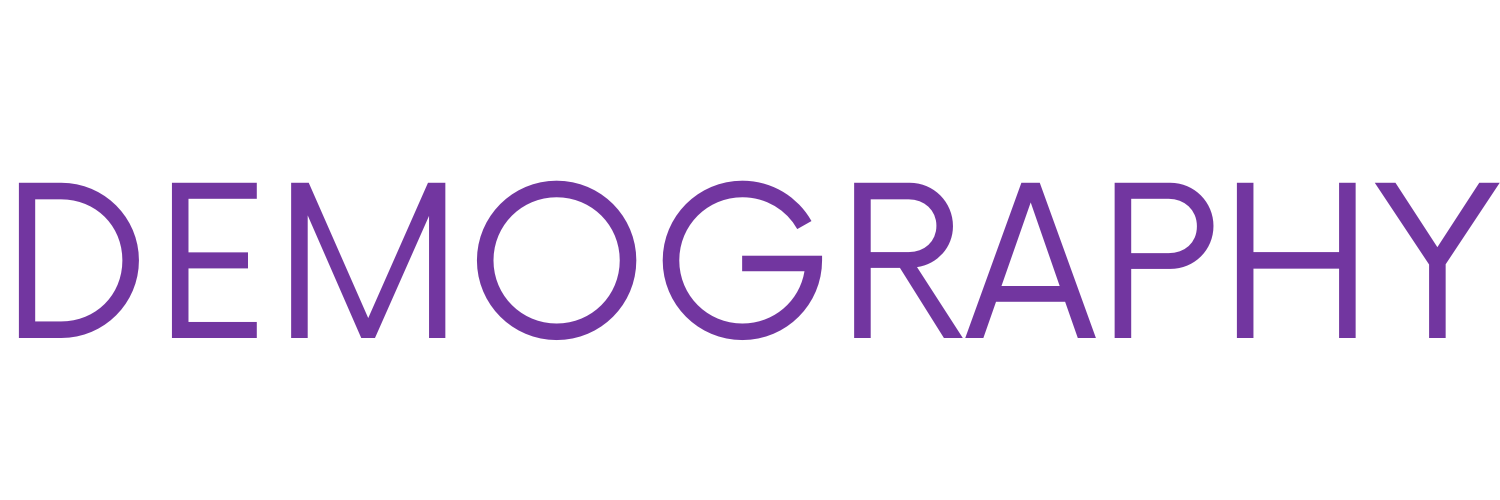
Demography Journal
@ReadDemography
Demography publishes research in several disciplines, including the social sciences, geography, history, biology, statistics, epidemiology, and public health.
“Sleeping With the Enemy: Partners' Heterogamy…”: @aledinal & @brunoarpinoEU examined data on nearly 30K British couples & found that couples holding divergent political party and Brexit preferences were at increased risk of union dissolution. @MPIDRnews ow.ly/a7k450W7Uq9



Love across the ballot box? It's complicated!💔A 30-yr UK study shows that couples with opposing political views are 38% more likely to break up - w/ Brexit disagreements being especially divisive!😬mpg.de/24863744/coupl… @MPIDRnews @aledinal @brunoarpinoEU @ReadDemography
REMINDER TO REGISTER!
Our next members-only Headlines Webinar is taking place on Monday, July 28 at 2PM EST 🕐 Join us for a discussion with experts from COGR on topics like indirect costs, research compliance, and other developments impacting the community! Register now ➡️ us06web.zoom.us/meeting/regist…
Excellent new piece in @ConversationUS pouring some cold water on population panic... #demography #fertility #birthrates #pronatalism
Connect with thought leaders to explore chemical exposures, social factors, and community influences on child health. Be part of the conversation—join @ECHOChildHealth in person or online September 15 for #ECHOSymposium2025 cvent.me/8229Py
Stay up-to-date with all the events in the profession with our event calendar: ow.ly/iYKI50WtBVx Want yours listed? Let us know! Send us a DM or e-mail staff.
In another August article with a leading question—“Whose Parents Matter?”—Wen Fan & Yue Qian examine 1968-2021 @umpsid data and find that “women earn more if their husband’s mother contributed more to the family income two years after her first birth.” ow.ly/bSzC50Wvv5c

Anita Li has posed the question, “Is It Daddy Time Yet?” From an analysis of 1989-2020 CPS data, the answer is: men with a child born in the 2010s worked ~3 hrs less per week during the birth month than peers in the 1990s--a modest but notable change. ow.ly/w2xB50Wvupw


PAA and the Demography team are pleased to mark the occasion of our incoming Editors in Chief with this “Note From the New Editors.” Here the Duke University trio—Hedy Lee, Giovanna Merli & Marcos Rangel—introduce new policies on reproducibility & AI use. ow.ly/HljO50WuV4Q

A study by MPRC Director Michael Rendall and colleagues finds support for male-predominant fertility patterns in exogamous unions, where fertility aligns more with the man's racial and ethnic group than the woman's. read.dukeupress.edu/demography/art…
The June issue has posted—2 research notes and 13 articles, including pieces on legalization and employment & assimilation outcomes of immigrant workers, how changing demographic rates shape kinship networks, mothers’ trends in work schedules ... & more. read.dukeupress.edu/demography/iss…
In “Changing Demographic Rates Reshape Kinship Networks,” @ShaJiang44, W Zuo, Z Guo & S Tuljapurkar “explore how demographic transition, especially the speed of transition, affects the number and age of kin” & change in kin networks. @Stanford @MPIDRnews ow.ly/EuKb50W8nTN

“Effects of Communal Violence on Women’s Marital Outcomes”: @DevakiGhose & @Divya_Pandey4 show that following the 2002 Gujarat riots, the prob. of child marriage rose relative to the rest of India while women’s age at marriage, employment & autonomy fell. ow.ly/SwKv50W7Yxx

New @dafnagelbgiser & Sigal Alon study, “Segregation, Choices & Inequality in Educational Outcomes”: The authors analyze college admin data on Jewish & Arab applicants & reveal how they weigh program characteristics, sometimes leading to academic mismatch. ow.ly/3JEQ50W7V8c

In “Legalization & Long-Term Outcomes of Immigrant Workers,” Claudio Deiana, @LudoGiua & @roby_nistico show how restrictions on undocumented workers "can be detrimental to the overall welfare of the host country." @crenos_sardegna @CESifoNetwork ow.ly/ybza50W7SMU

“The Emergent Motherhood Mental Health Advantage: Did Pandemic Times Make a Difference?”: @kei_nomaguchi @melissamilkie & F. Marino show that “partnered mothers were less likely to experience anxiety & depression” than single mothers or nonmothers. @bgsu ow.ly/mKBr50W7R4a

From Park, Pebley, Goldman, Pratt & @MaraSheftel: “Racial & Ethnic Disparities in Functional Limitations Among US-born Older Adults” uses HRS data to assess the cumulative effect of physically demanding work over the life course. @gerontologyumb @UCLAFSPH ow.ly/6m7H50W7Qal

M. Weden, M. Rendall & J. Brown examine “Gender Asymmetry in the Fertility of Racially & Ethnically Exogamous US Couples,” finding “strong support for the gender-asymmetric male predominance hypothesis of exogamous fertility.” @RANDCorporation @UMD_MPRC ow.ly/rr4O50W7ie1

“Trends in Mothers’ Work Schedules in the United States, 1988-2019”: @ARPilarz & @AnnaWalther17 find "growing gaps in the propensity to work nonstandard schedules by mothers’ education, family structure, and race & ethnicity.” @UWMadSocialWork @UW_CDE ow.ly/YRs550W7gZx

In “Modeling & Forecasting Healthy Life Expectancy,” @bergeron_mp, @CosmoStrozza et al. “forecast health & mortality simultaneously in a coherent & simple manner...accounting for changes in prevalence & transition probabilities over time.” @UniSouthDenmark ow.ly/HXTt50W7c3t
